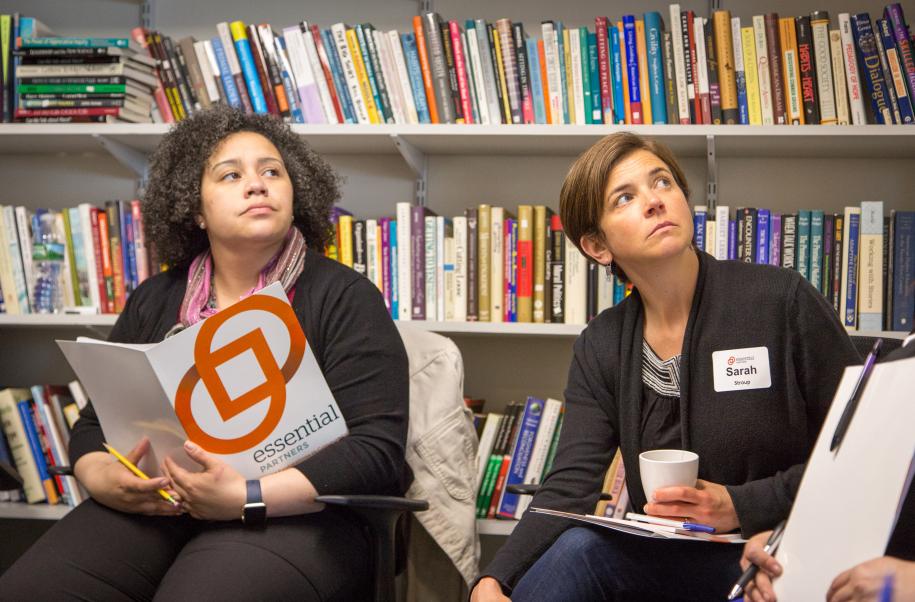
Breadcrumb
- Essential Partners
- Our Impact
- News and Notes
- Don’t Go It Alone: Better Outcomes When You Train, Plan Together
Don’t Go It Alone: Better Outcomes When You Train, Plan Together

Planning a dialogue in coordination with folks from a diverse and divided community can be arduous, frustrating, and time-consuming. You have to balance conflicting schedules, find spaces to meet, and manage expectations.
But there is evidence that it’s not ideal to embark on a dialogue project alone.
Essential Partners follows up with our workshop participants after three, six, and twelve months as part of our Monitoring, Evaluation, and Learning (MEL) program.
During these interviews, we ask alumni about their plans for community dialogue—how they’re progressing, where they’re getting stuck, and their successes. We also ask about two key measures of community health: social coherence and resilience.
What are Cohesion and Resilience?
The cohesiveness of a community reflects the amount of trust people have across differences. If people with differing views or identities tend to avoid one another, there’s not much cohesion. If diverse views and identities are accepted and those people are able to participate fully in public discourse, then cohesion is strong.
Resilience, as we define it, reflects the capacity of community members to remain connected to each other in challenging situations—the moments that threaten the identities of one or more groups. Do social bonds tend to break down over differences of view or value? If so, the community lacks resilience.
Cohesion makes it possible for people to feel secure enough in their community to engage in tough conversations and trust that everyone will be heard and taken seriously. Resilience makes it possible for people to turn to each other in moments that threaten the stability of a community.
When these two qualities are strong, it means that people are able to work together to solve the deepest problems in their community—even when things get rough.
Stronger Together
Our recent findings indicate that Essential Partners program alumni are almost twice as likely to feel that their communities are more cohesive if they trained and created dialogue plans with other members of their community. They’re also almost twice as likely to report that the community’s relationships across differences are more resilient.
What this reveals is the strong multiplying effect of having more than one person from a given community participate in our trainings, then work on a community dialogue plan together. Involving even one additional person in the planning process makes a big difference.
This may be a result of mutual support and accountability, it could be the natural result of adding another perspective to a project, or it could be something else altogether. Whatever the cause, the results are undeniable.
Planning, organizing, and facilitating a dialogue in your community works best when it’s the product of multiple perspectives. Don’t go it alone.
